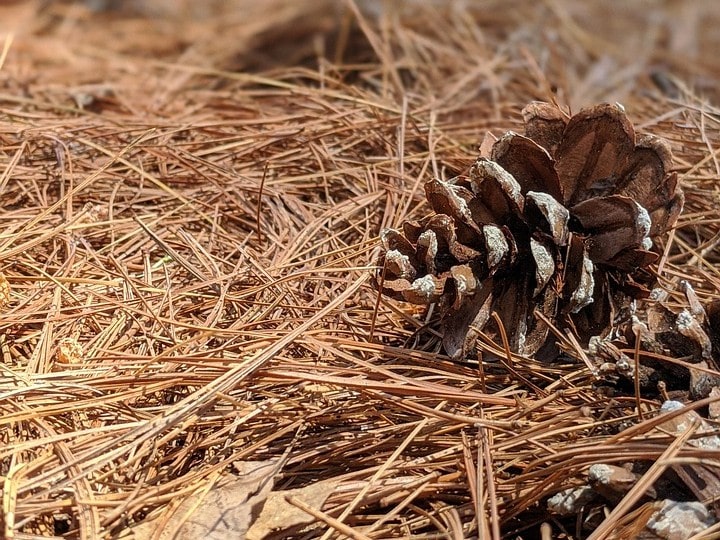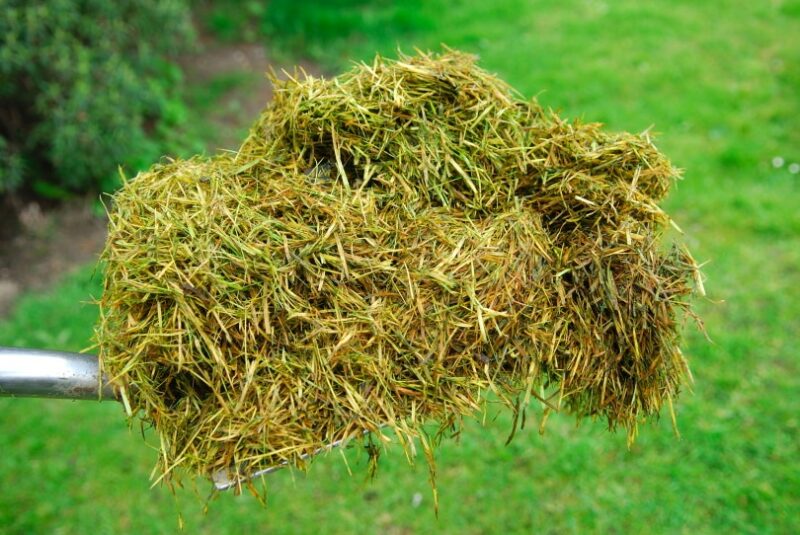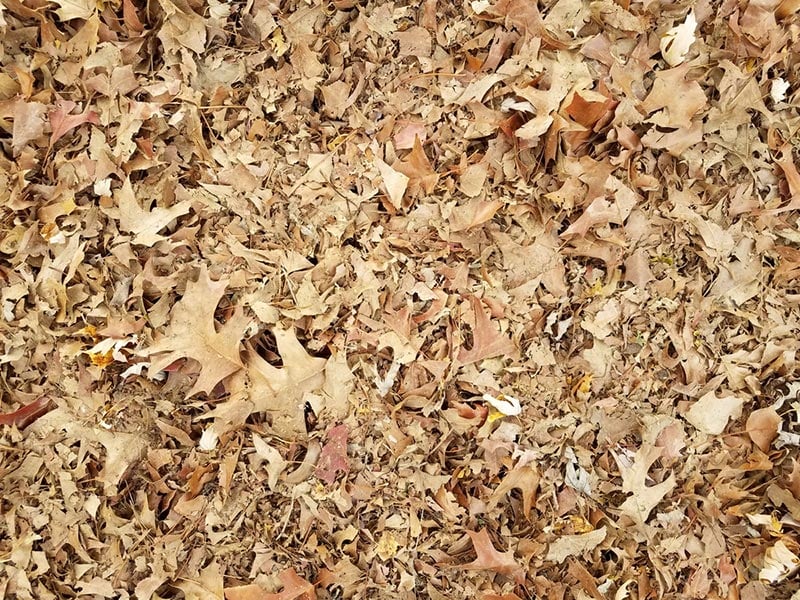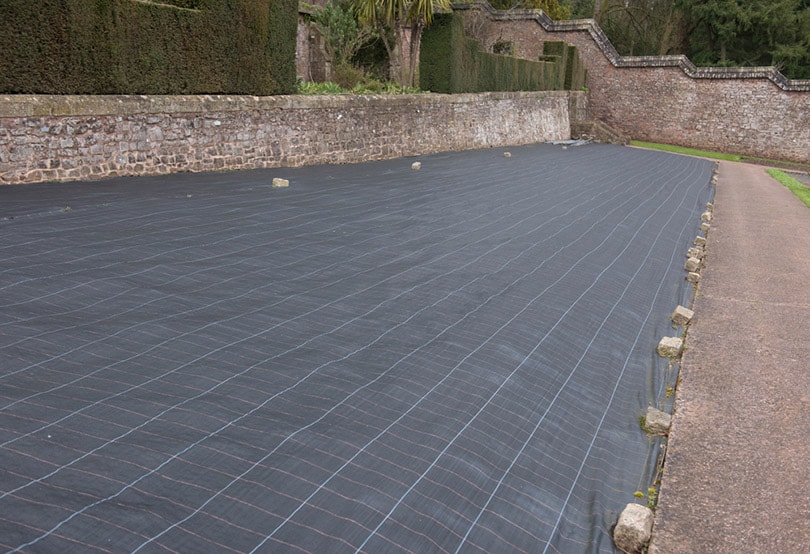What Are the Best Mulches for Strawberries? 6 Great Options
-
Ashley Bates
- Last updated:

Mulch has a myriad of benefits for growing all sorts of things—including your strawberries. If you have a strawberry patch in mind this year, you might wonder what the best options are for ground coverage—or if you should add mulch.
Mulch has several benefits for growing plants in, including moisture conservation, weed suppression, and separation of plants and soil. So, with strawberry plants developing fruits, it’s best to keep them off the ground.
No mulch is just alike, though. Here are six of the best options for strawberry plants specifically.
The 6 Mulches for Strawberry Plants
1. Pine Needles

Pine needles are super inexpensive and easy to come by. You can score some for free if you live in states where evergreens are a thing. Pine needles have several benefits that make them attractive for strawberry patch coverage.
Pine needles are a very sustainable choice, laying close to the ground without smothering your strawberries. But they provide an excellent barrier between the soil and the berries, ensuring the developing fruit will not lay in any moisture.
If you choose to lay pine needles, you can disperse them one to two inches deep. The pine needles will naturally crisscross, creating a nice webbing of well-draining support. Also, since the smell of pine repels many insects, it can actually deter some pests that would love to snack.
If you purchase pine needles, otherwise referred to as pine straw, online, we think you’ll love this pine needle mulch from USA Pinestraw.
- Repels some potential pests
- Prevents berries from laying on soil
- Well-draining
- Can get pricey
2. Straw

Straw is the most classically used mulch for strawberries. You simply add fresh straw between one and two inches thick to separate the strawberries from the soil and prevent weed growth. This mulch option will allow water to drain into the roots while preventing weed growth around your plants.
It’s important to understand that straw is not the same thing as hay. Straw is a byproduct of grain farming, resulting in drying the stalks of barley, oats, and wheat plants. Hay is primarily used as animal feed, consisting of alfalfa and clover.
It is best to replace your straw mulch often, as it can become a breeding ground for mold and bacteria.
Because hay can easily drop in germinated seeds, it is best to always use straw in place of hay when possible. You can buy straw bales at many garden centers and retail stores. You can also get straw from local farmers or feed shops, so keep your eyes open.
You can even order it online, like this Garden Elements Straw Bale by Shady Creek Farms.
- Cheap
- Easy to find
- Simple maintenance
- Natural
- Frequent replacement needed
3. Grass Clippings

Grass clippings are a natural option that you can compost yourself. You mow the lawn, bag up the cut grass, and spread it among your strawberries. You can do all of this without spending a dime, and it’s a great way to recycle.
You can apply these clippings roughly a quarter of an inch high. It’s a good idea to let the clippings dry out for a few days before dispersing them in the soil.
Grass clippings provide a nitrogen-rich environment to help your strawberries thrive. It would be best if you replaced the clippings once every two weeks for optimal results.
- All-natural method
- Nitrogen-rich
- Great way to recycle
- Can carry pests
4. Shredded Leaves

If you have some leaf coverage on your lawn, you can easily use this brown, crisp organic matter for your strawberries. Simply crush up the leaves and disperse them onto the soil. It might require a little labor, but the results are worth it! This is a nutrient-dense option for mulch—terrific for the soil.
Certain areas don’t have access to leaves—like treeless yards, cityscapes, or coniferous-heavy areas. But you can get these from your backyard if you live anywhere with a moderate amount of loose leaves. Not only is this cost-effective, but it creates lovely organic matter in the soil.
This is a beautiful way to recycle the leaves in your own space without having to purchase anything. It’s cheap, nutritionally beneficial to soil, and easy to come by.
- Great organic matter or soil
- Recycles
- Free
- Not a viable option in some geographical locations
5. Peat Moss

Peat moss is a wonderful, nutrient-rich additive to use for strawberry mulch. Peat moss is an excellent mulching option and has soil benefits too. The peat moss helps maintain the soil pH for your strawberry patch.
Another upside to using peat moss is that it conditions the soil by strengthening the capacity to hold nutrients. If you have a pH that is a little high for strawberries, slightly above 6.2, you can add some peat moss to even things out. Peat moss also keeps the soil moist in sandier soils that have trouble retaining water.
If you have a large area to cover, you might find that peat moss can be a little pricier than some other options. You can find quality peat moss at home improvement stores, garden centers, and online. You can order on Amazon—like Hoffman’s Canadian Sorghum Peat Moss.
- Conditions soil
- Helps soil retain water
- Regulates soil pH
- Can get expensive
6. Chopped Corn Stalks

Another excellent option for your strawberry patch is shredded corn stalks. They are hardy, tough, and all-natural. They’re able to keep berries above the soil for optimal growth or cover plants when the frost arrives. Corn stalks provide very organic insulation for strawberries, even in colder months.
If you choose the cornstalk method, you should place the cornstalk pieces three to five inches high. Make sure that your strawberries are not smothered underneath, and make sure they have proper separation from the soil.
You will likely only have access to corn stalks during the fall months if you want to go the free route—and that’s okay! You can get some from your garden, a friend’s garden—or even from a local farmer. The choice is yours!
- Well-insulating
- Hardy and natural
- Works all season
- Not available in store
Alternatives to Strawberry Patch Mulch
1. Black Plastic Sheeting

Black plastic sheeting is a common option for strawberry growers during the season. It prevents weeds from forming around the strawberries, providing a barrier between the soil and the air. So, it serves a functional purpose.
Black plastic sheeting is completely waterproof, so you will need to ensure that you’re leaving enough space for your strawberries to get the required nutrients.
Some gardeners prefer to use more organic matter over plastic. This is a matter of preference from individual to individual.
To make a quick purchase, take a look at the Farm Plastic Supply Store Black Plastic Sheeting.
- Prevents weed growth
- Creates a barrier for berries
- Inorganic option
- Less aesthetically pleasing
2. Strawberry Mats
Strawberry mats are super easy to use, and they’re very efficient at what they do. Most of them are impregnated with a special copper formula that repels slugs and snails. The fabric simply sits around the plant’s circumference, warding off potential pests.
If your particular garden space has trouble with slugs and snails, this might be the best option to protect your strawberry patch. It also creates a barrier around the base of the plant to prevent weeds from growing through.
These mats take a little work to come by. You could make a similar DIY at home, but maybe with less potent of an effect. If you want the real shebang, you’ll have to shop on a few websites offering this product, as they are not available on Amazon.
- Wards off snails and slugs
- Creates a barrier
- Not readily available
Mulch Over Winter: Is It Necessary?
Strawberries need extra protection over the winter months to produce more bountifully in the spring. Strawberry plants can be very sensitive to below-freezing temperatures. It can be easy for them to be damaged due to thawing and refreezing toward the spring months.
If you’re looking for mulch to insulate these plants over the winter, the best options you have are straw and pine needles. Another good option in the fall is to use fallen leaves.
No matter what mulch you’ve chosen throughout the summer, it’s time to re-mulch your garden from November to December. You should add an insulation layer that is roughly 4 inches thick. It can vary slightly depending on your climate.

Growing Strawberries
Growing healthy strawberries is relatively easy, even for novice gardeners. You can develop strawberries in your garden space with a little extra attention.
Strawberries are delicious fruits that will attract a variety of wildlife to your garden space. So remember that you must put up some barriers and protect your plants when you’re not around.
Here are some things to keep in mind.
Moisture
Strawberries have relatively shallow roots, requiring moist soil. While there should be no standing water, it is essential to keep your strawberry patch protected in hot, dry climates.
On average, strawberries need one to 1 1/2 inches of weekly rainfall. You can supplement it when rainfall is light.
Soil Type
Strawberries thrive best in sandy, loamy soil with tons of organic matter. All soil should be well-draining and support your strawberries’ shallow roots.

Soil pH
Strawberries generally enjoy a pH between 5.8 and 6.2.
Natural Pests & Predators
Strawberries have quite a few of nature’s critters working against them. Not only do bugs love strawberries, but so do bigger predators like deer and rabbits. You might need an extra layer of protection to keep your plants safe.
Many choose to have raised gardens, grow them indoors, or put some type of barrier around their strawberry patch.
In Conclusion
Mulching your strawberry patch is easy, cheap, and often free! The mulches on this list always have their share of positives, so you can easily choose one that works best in your case. Feel free to try out a new mulching method this year to see how successful your patch will be. Within a few years of growing, you’ll soon find what mulching method works best for your garden space.
Featured Image Credit: EkaterinaN, Shutterstock
Contents
